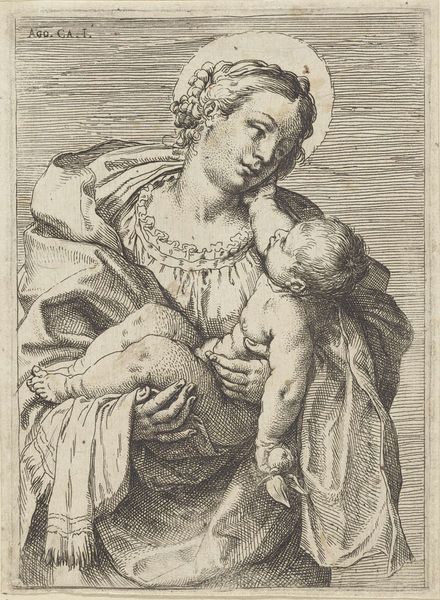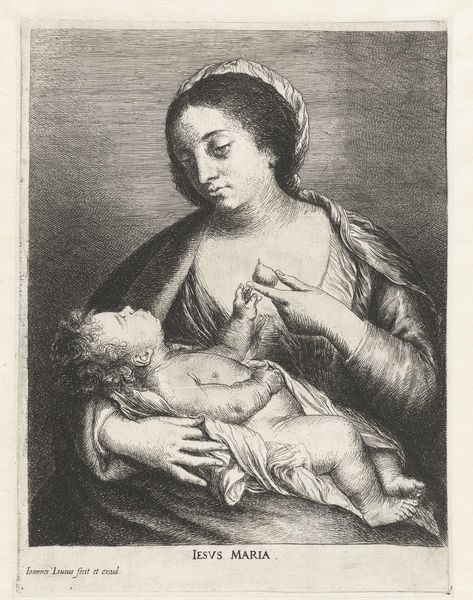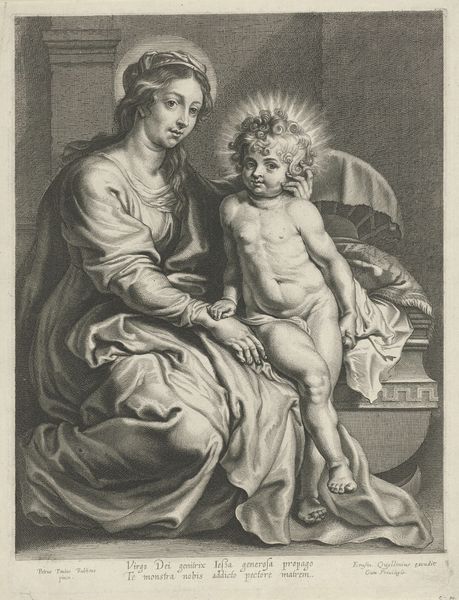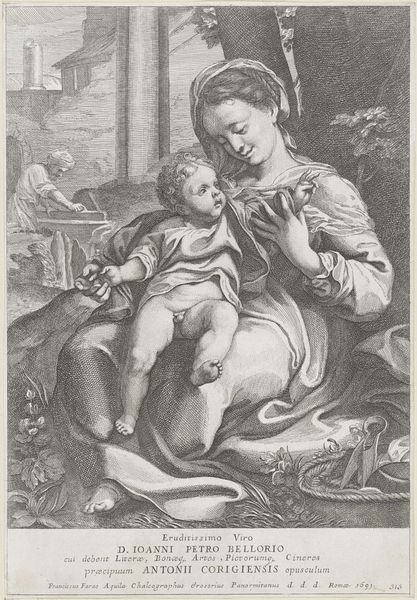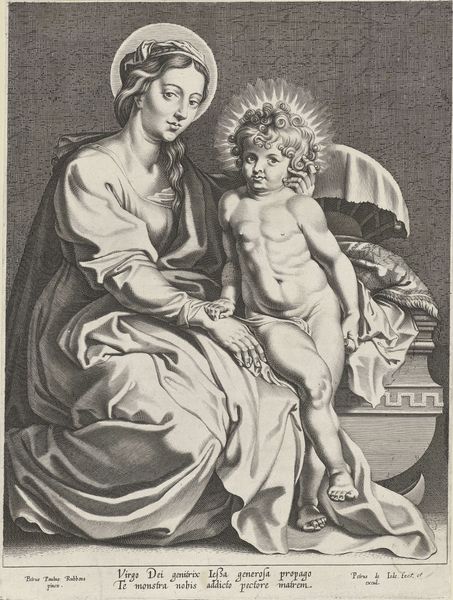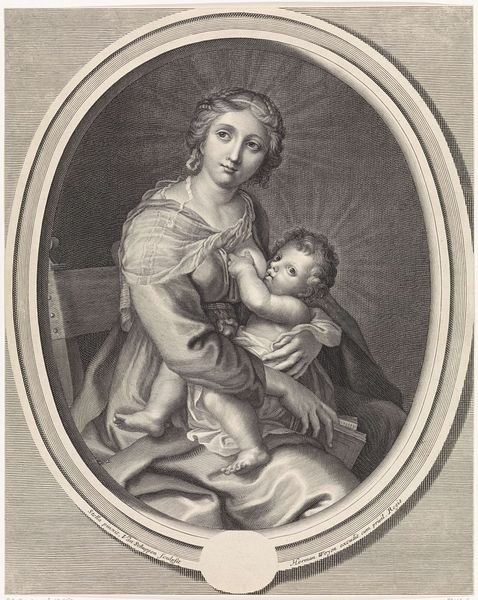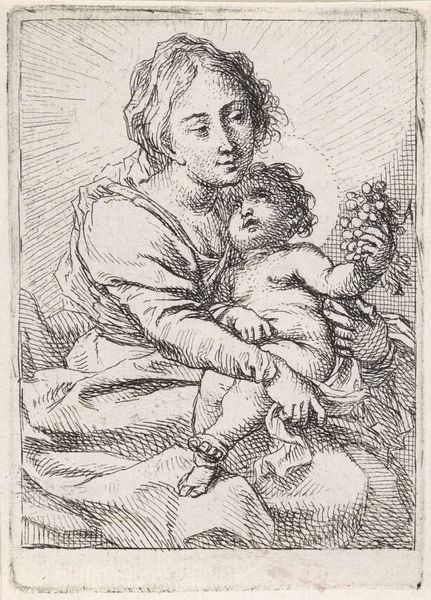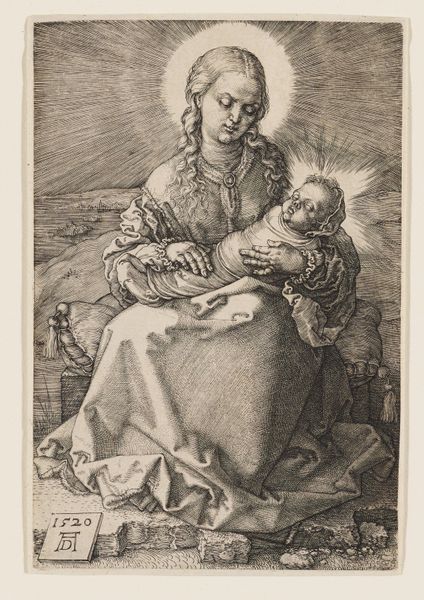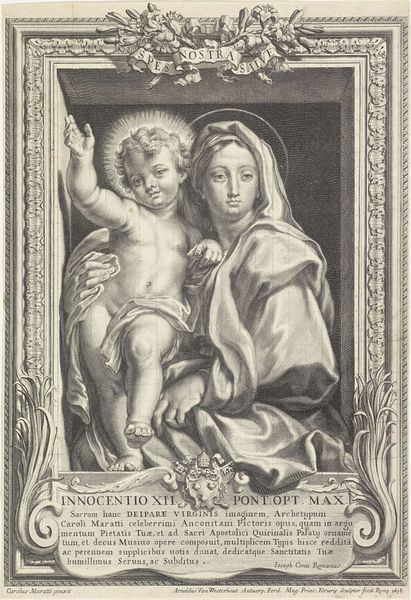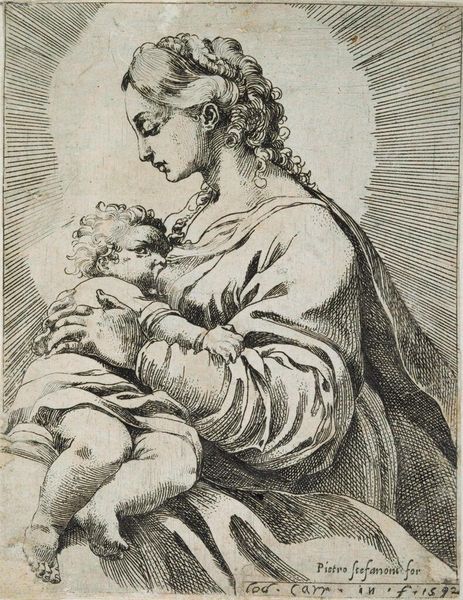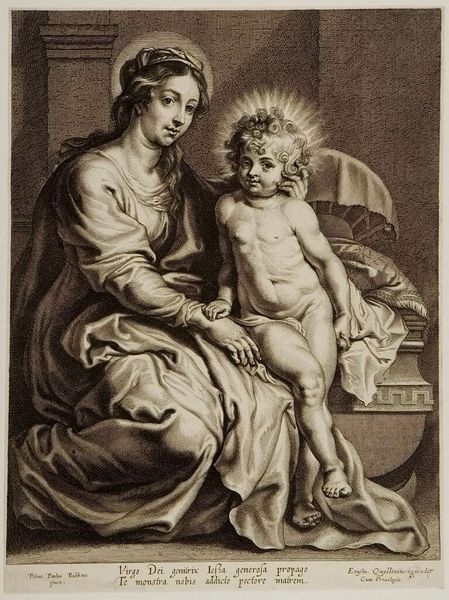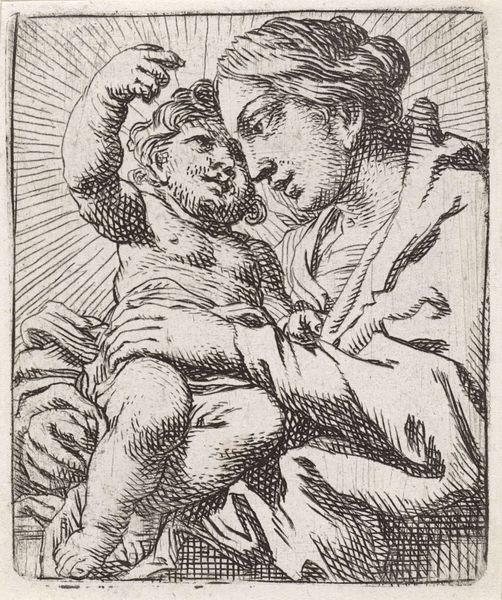
print, engraving
#
portrait
#
baroque
# print
#
old engraving style
#
bird
#
figuration
#
portrait drawing
#
history-painting
#
italian-renaissance
#
engraving
Dimensions: height 160 mm, width 110 mm
Copyright: Rijks Museum: Open Domain
Curator: Before us hangs “Maria met Christuskind,” dating somewhere between 1616 and 1678, currently held at the Rijksmuseum. It’s an engraving, portraying Mary and the Christ Child. Editor: It strikes me as incredibly tender. The softness of the lines, despite being an engraving, really captures the gentle connection between mother and child. It's Baroque, certainly, but lacks some of the dramatic flair you often see. Curator: Precisely. Notice the almost symmetrical composition; Mary's face aligned closely with Christ, a balanced distribution of light and shadow... It guides our eye towards their faces, the undeniable focal point. The engraving, through strategic lines, sculpts the roundness of their figures. Editor: I wonder about its function within the context of 17th century society. Was this image intended for private devotion, circulated widely to reinforce specific theological doctrines about motherhood, or meant for elite consumption? Prints had such diverse uses. The very inscription – "I have found the one my soul loves" – invites personal reflection, but how might that be mediated by social norms and expectations about the Virgin Mary? Curator: An important point. This is after all Italian Renaissance mannerism which placed an important role on idealized proportion and figuration; yet also prefigures Baroque theatricality in the flow and fall of fabrics, those concentric lines emanating as halos… The use of light and shade definitely contributes to the spiritual presence. It adds to the monumentality but there’s something slightly awkward with her pose too, doesn't it? Almost exaggerated? Editor: I think it’s also relevant that we only have ‘Anonymous’ ascribed. This raises intriguing questions of how to read it in relation to individual style versus collective artistic practices prevalent at the time in Baroque circles, when images circulated freely and were often reworked by different hands. It also challenges modern notions of artistic genius and individuality. Curator: True. From a purely formal perspective, analyzing those repeating curves and that dramatic hatching – it offers a vocabulary to decode and consider themes beyond simple subject matter. Editor: And yet, seeing art as deeply entangled with social life helps remind me, these lines, composition, weren't just ends themselves; but designed also as persuasive forms for the time period. To guide viewers' feelings, inspire acts…
Comments
No comments
Be the first to comment and join the conversation on the ultimate creative platform.
